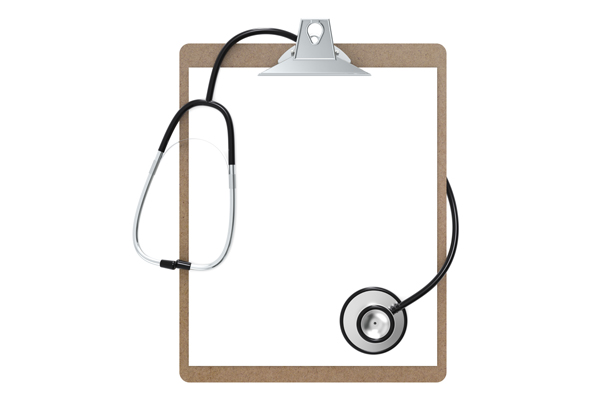
Gluten and Weight Control
The issue regarding gluten consumption and weight control is a common topic of discussion in our clinic.
Often people experience weight loss or weight gain when starting a gluten-free diet.
By its obvious nature, gluten intolerance has a profound effect on the absorption of nutrients from the digestive tract and production of hormones and enzymes regulating metabolism of fat, carbohydrates, and proteins.
Even though gluten-free diet weight loss and gains are a normal part of beginning a new diet, it is valuable to know the factors that may play into the struggles.
Do gluten peptides stimulate weight gain?
There is a prevailing theory that gluten causes an increase in hunger because gluten breaks down into peptides that have structural similarities with opioid peptides.
It is easy to assume that opioid peptides resulting from gluten digestion and absorbed into the blood will reach the brain and lead to blissful feelings and increased appetite. However, the presence of opioid peptides in the gastrointestinal tract during digestion does not necessarily mean these are absorbed in sufficient amounts, remain stable after absorption, or reach the brain to elicit a biological effect.
The opioid peptides are relatively small and most are broken down completely by the combined action of gastric acids and gastric and pancreatic enzymes. Any peptides that still pass into the blood are not in a sufficient quantity nor do they remain stable enough to induce a measurable biological effect resulting in an increased change in food consumption.
Nutr Bull, 47(2): 186-198. (Jun 2022) “Do gluten peptides stimulate weight gain in humans?” Brouns, Fred; Shewry, Peter R.
Risk of obesity during a gluten-free diet
Authors of a meta-analysis assessing the risk of obesity on a gluten-free diet observed some increases in the mean BMI but concluded that a gluten-free diet does not increase the risk of becoming overweight or obese.
The data demonstrated that 9% of the entire study population moved to a higher BMI category. This percentage was higher in the adult subgroup than in children (12% vs. 6%).
In contrast, 20% of the study population moved from the overweight/obese category to the underweight/normal category, with the percentage significantly higher in the pediatric versus the adult population (34% vs. 8%).
Explanations for the increase in weight on a gluten-free diet may be due to better absorption after the restoration of intestinal mucosal function with the gluten-free diet or a poor composition of the gluten-free diet with an increased intake of gluten-free processed food options containing high amounts of calories, fat, and sugar.
Nutr Rev, 10;81(3): 252-266. (Feb 2023). “Risk of obesity during a gluten-free diet in pediatric and adult patients with celiac disease: a systematic review with meta-analysis”
Barone M, Iannone A, Cristofori F, Dargenio VN.
Primary amenorrhea as a manifestation of celiac disease
Celiac disease is a systemic autoimmune disorder that has a wide range of clinical manifestations that can include weight loss, short stature, and amenorrhea (loss of menstrual period).
Amenorrhea is often, but not exclusively, caused by chromosomal irregularities that lead to primary ovarian insufficiency or anatomic abnormalities. However, in the absence of structural defects, diseases that affect the hypothalamic–pituitary–gonadal axis should be considered. Systemic illness, such as celiac disease if severe enough, can decrease hypothalamic gonadotrophin-releasing hormone secretion which leads to secondary or primary amenorrhea.
After starting a gluten-free diet, menses typically returns after correction of the underlying nutritional deficit. Compliance with the gluten-free diet is essential for catch-up growth, weight gain and pubertal maturation.
Chronic systemic illnesses like celiac disease are associated with malabsorption and caloric deficit, which inhibits hypothalamic secretion and can lead to amenorrhea. Therefore, gynecological presentations such as infertility, delayed menarche or amenorrhea should prompt investigation of celiac disease.
BMJ Case Rep, 14(1): e239260. (Jan 27, 2021) “Primary amenorrhoea as a manifestation of coeliac disease” Costa, STB, Sanmarful IS.
Patients with celiac disease are at high risk of developing metabolic syndrome and non-alcoholic fatty liver
Metabolic syndrome is a cluster of conditions that occur together, increasing the risk of heart disease, stroke, and type 2 diabetes. These conditions include increased blood pressure, high blood sugar, excess body fat around the waist, and abnormal cholesterol or triglyceride levels.
Nonalcoholic fatty liver disease is an umbrella term for a range of liver conditions affecting people who drink little to no alcohol. As the name implies, the main characteristic of NAFLD is too much fat stored in liver cells.
In group 1, of 44 people with celiac disease who had received no treatment, metabolic syndrome was present in 5 (11.4%) patients at baseline and 9 (18.2%) after 1 year of a gluten-free diet.
Patients having fatty liver increased from 6 (14.3%) patients at baseline to 13 (29.5%) after 1 year of a gluten-free diet.
In group 2, of 130 patients with celiac disease on a gluten-free diet for a median duration of 4 years, 30 out of 114 (26.3%) had metabolic syndrome and 30 out of 130 patients (23%) had fatty liver.
Intest Res., 10.5217/ir.2019.00136, 106-114. (Jan 19, 2021) “Patients with celiac disease are at high risk of developing metabolic syndrome and fatty liver” Agarwal A, Singh A, Mehtab W, Gupta V.
Role of an experienced registered dietitian in the management of celiac disease and non-celiac gluten and wheat sensitivity
Those adhering strictly to a gluten-free diet will often consume a nutritionally inadequate diet, high in sugar and fat and deficient in fiber. A nutritionally inadequate gluten-free diet can lead to malnutrition, overweight, and obesity, with poor outcomes in patients adopting a gluten-free diet. Therefore, a registered dietitian who is experienced in the management of celiac disease is crucial for nutritional assessment and management, including monitoring of dietary adherence, when treating patients who adopt a gluten-free diet.
There are multiple roles for a dietician both at the time of diagnosis and in the follow-up, including but not limited to: (1) nutritional assessment; (2) education on the adoption of a strict gluten-free diet in celiac disease and appropriate gluten restriction for non-celiac gluten and wheat sensitivity; (3) ensuring nutritional adequacy of a gluten-free diet; (4) diagnosis and treatment of micronutrient deficiencies; (5) advice on adequate caloric and macronutrient intake; and (6) recommendations of nutritional support therapies, if needed.
Nutrients, 15(6):1475: (Mar 19, 2023) “Nutritional Considerations in Celiac Disease and Non-Celiac Gluten/Wheat Sensitivity” Abdi F, Zuberi S, Blom JJ.



